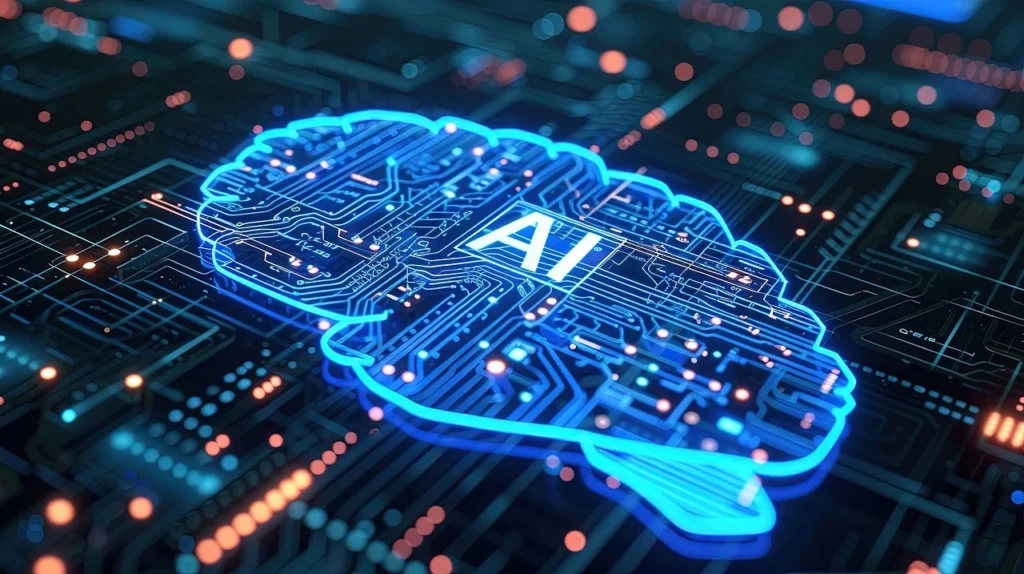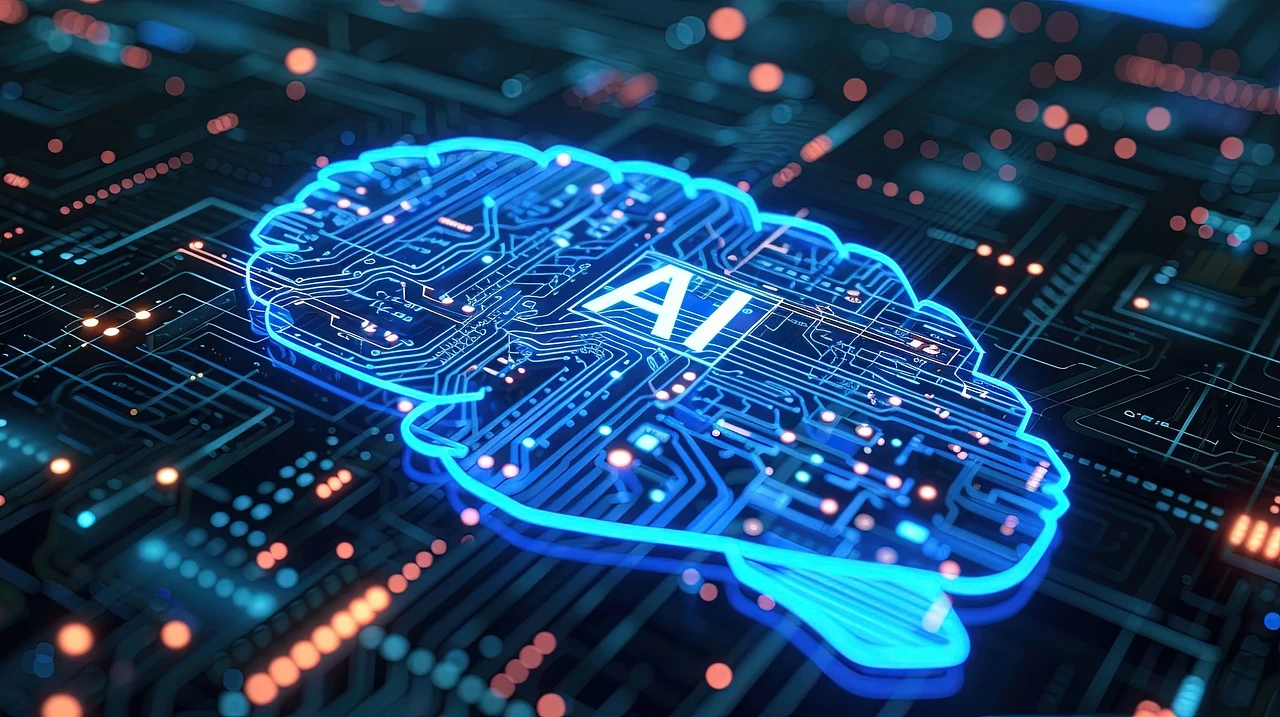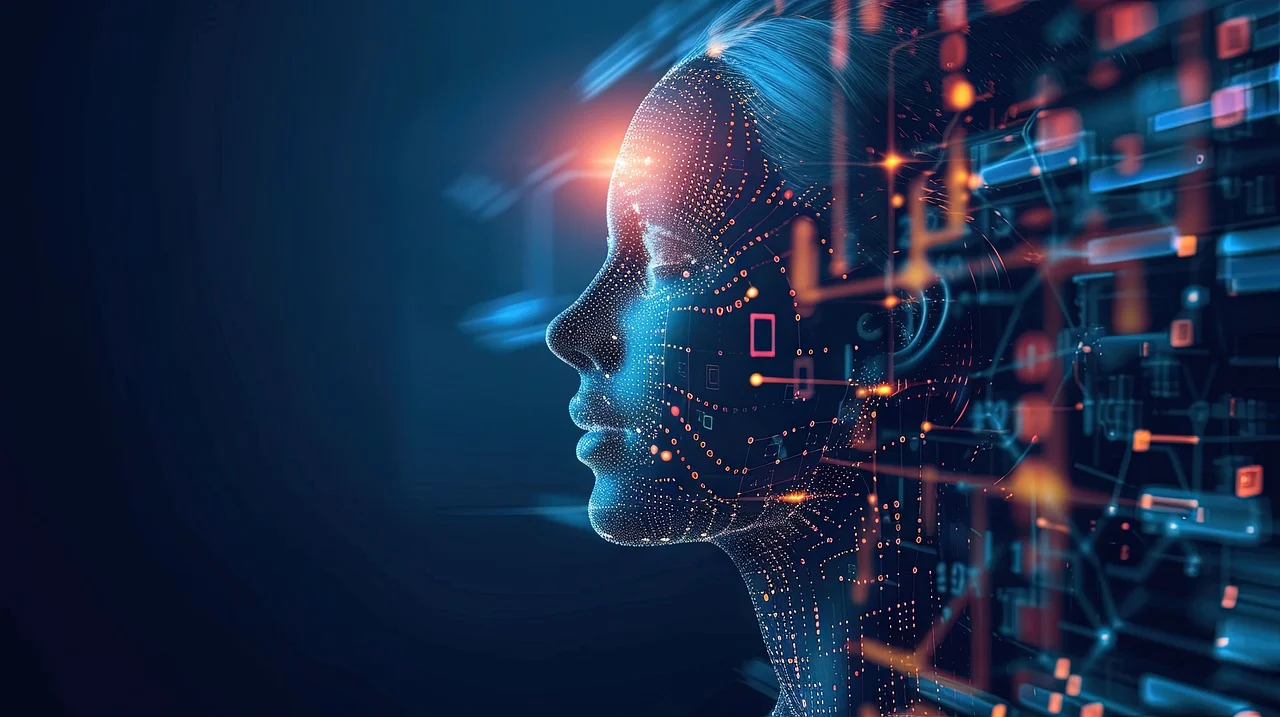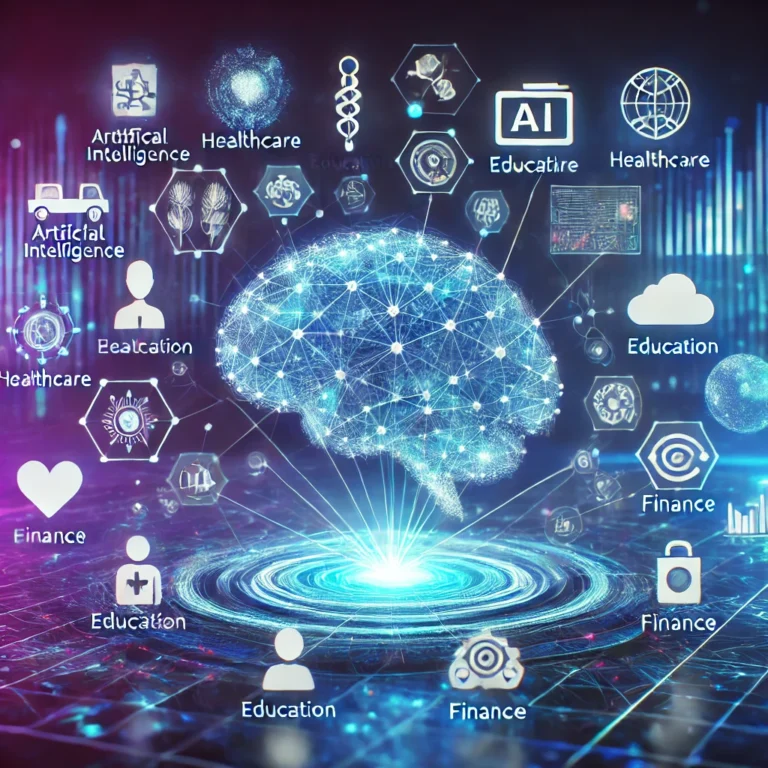Generative AI vs. Machine Learning: How Are They Different?
Introduction
Generative AI vs. Machine Learning
Artificial Intelligence (AI) has become an integral part of technological innovation, revolutionizing industries and reshaping the way we interact with technology. Among the numerous subfields of AI, two have garnered significant attention for their transformative potential: Generative AI and Machine Learning (ML). These technologies, while closely related, serve distinct purposes and employ unique methodologies, making them essential tools in different contexts.
Generative AI is often celebrated for its creativity, enabling machines to produce original content such as text, images, music, and even videos. It has sparked a surge of innovation in fields like entertainment, design, and marketing, offering tools that mimic human creativity with astonishing accuracy. On the other hand, Machine Learning focuses on analyzing data to uncover patterns, make predictions, and drive decision-making processes. ML is the backbone of predictive analytics, powering applications ranging from fraud detection and recommendation systems to autonomous vehicles and healthcare diagnostics.

Understanding the differences between these two branches of AI is more than an academic exercise—it’s a practical necessity for businesses, researchers, and technologists aiming to harness the full potential of AI. This article delves into the fundamental concepts, workflows, applications, and ethical implications of Generative AI and Machine Learning, highlighting their unique characteristics and exploring how they complement each other in advancing the AI frontier.
Generative AI vs. Machine Learning are two pivotal subfields of Artificial Intelligence, each serving unique purposes. Generative AI shines in creating original content, such as text, images, and music, using advanced models like GANs and Transformers. In contrast, Machine Learning excels at analyzing data, uncovering patterns, and making accurate predictions, driving applications like fraud detection and personalized recommendations. Together, they complement each other, shaping innovations in industries from healthcare to entertainment. Discover more about the potential of Generative AI vs Machine Learning to transform technology and creativity.
What Is Machine Learning?
Machine Learning (ML) is a subfield of Artificial Intelligence (AI) that focuses on developing algorithms and systems capable of learning from data and improving their performance over time without explicit programming for every task. By leveraging patterns and insights from data, ML models make predictions, automate processes, and support decision-making in various domains.
Key Characteristics of Machine Learning
- Data-Driven Learning
- ML systems learn by analyzing data, identifying patterns, and understanding relationships within it.
- The quality and quantity of data significantly influence a model’s accuracy and effectiveness.
- Datasets must often be cleaned, preprocessed, and prepared to ensure reliable outcomes.
- Learning Paradigms
- Supervised Learning: Models are trained on labeled datasets, where inputs are paired with known outputs. The goal is to predict the correct output for new inputs.
- Example: Predicting house prices based on features like size, location, and number of bedrooms.
- Unsupervised Learning: Models analyze unlabeled datasets to uncover hidden patterns or structures.
- Example: Clustering customers into groups based on purchasing behavior.
- Reinforcement Learning: Systems learn by interacting with an environment, making decisions, and receiving feedback in the form of rewards or penalties.
- Example: Training robots to perform tasks like walking or playing chess.
- Supervised Learning: Models are trained on labeled datasets, where inputs are paired with known outputs. The goal is to predict the correct output for new inputs.
- Iterative Improvement
- ML models improve their accuracy and performance by iterating over multiple training cycles, often refining themselves as more data becomes available.

Applications of Machine Learning
Machine learning is widely used across industries, driving innovation and efficiency in numerous fields:
- Recommendation Systems: Platforms like Netflix and Amazon use ML to suggest personalized content or products.
- Fraud Detection: Financial institutions rely on ML models to identify unusual patterns and detect fraudulent transactions.
- Predictive Analytics: Businesses use ML to forecast sales, market trends, and customer behavior.
- Healthcare: ML aids in diagnosing diseases, personalizing treatments, and predicting patient outcomes.
- Natural Language Processing (NLP): ML enables chatbots, language translation, sentiment analysis, and voice assistants like Alexa and Siri.
- Autonomous Systems: Self-driving cars and drones leverage ML to navigate and make real-time decisions.
Popular Machine Learning Models
ML employs various algorithms, each suited to specific tasks and data types:
- Linear Regression and Logistic Regression: Simple yet powerful techniques for predicting continuous values or probabilities.
- Decision Trees: Models that split data based on conditions, making them intuitive for classification and regression tasks.
- Support Vector Machines (SVMs): Effective for high-dimensional data and classification problems.
- Neural Networks: Inspired by the human brain, these models excel at complex tasks like image recognition, speech synthesis, and natural language understanding.
- Ensemble Methods: Techniques like Random Forests and Gradient Boosting combine multiple models to improve accuracy and robustness.
Challenges in Machine Learning
While ML offers immense potential, it comes with challenges:
- Data Quality: Inaccurate, incomplete, or biased data can negatively affect model performance.
- Overfitting: When a model becomes too tailored to training data, it may fail to generalize to unseen data.
- Computational Requirements: Training large ML models often demands significant computational power and resources.
- Ethics and Bias: Ensuring fairness, transparency, and accountability in ML systems is crucial to avoid reinforcing societal biases.
Machine Learning continues to evolve, shaping the future of technology and offering transformative solutions across diverse sectors.
What Is Generative AI?
Generative AI is a specialized subset of AI that focuses on creating new content, whether text, images, music, or code. It leverages advanced ML techniques to generate outputs that mimic human creativity.

Key characteristics of Generative AI include:
- Generative Models: Generative AI employs models like Generative Adversarial Networks (GANs), Variational Autoencoders (VAEs), and Transformer-based architectures (e.g., GPT) to produce realistic content. These models use probabilistic approaches to generate new outputs based on patterns learned during training.
- Training on Vast Data: Similar to ML, Generative AI models are trained on large datasets, but the focus is on generating rather than classifying or predicting. For example, GPT models are trained on extensive text corpora to generate coherent and contextually relevant text.
- Applications: Generative AI is used in content creation (e.g., ChatGPT for text generation), image synthesis (e.g., DALL·E for generating images from text prompts), music composition, video game design, and even drug discovery by simulating molecular structures. It also finds applications in creating deepfake videos and enhancing customer experiences through chatbots and virtual assistants.
- Ethical Considerations: While Generative AI has immense potential, it also raises ethical concerns, such as the creation of misleading content, privacy issues, and intellectual property challenges.
Key Differences Between Generative AI vs. Machine Learning
| Feature | Machine Learning | Generative AI |
|---|---|---|
| Purpose | Analyzing data to make predictions or decisions. | Creating new content or data. |
| Core Techniques | Regression, classification, clustering. | GANs, Variational Autoencoders, Transformers. |
| Output | Predictions, classifications, or insights. | Original content (e.g., text, images, music). |
| Applications | Fraud detection, stock price prediction. | Text generation, image synthesis. |
| Complexity | Focuses on accuracy and interpretability. | Focuses on realism and creativity. |
Generative AI vs. Machine Learning How Do They Work?
To further appreciate the distinction, it’s useful to examine how these technologies function under the hood.
Machine Learning Workflow:
- Data Collection: ML begins with gathering high-quality data that is representative of the problem domain.
- Data Preprocessing: Cleaning and organizing data into a suitable format. This includes handling missing values, normalizing numerical data, and encoding categorical variables.
- Model Selection and Training: Choosing an appropriate algorithm (e.g., linear regression, neural networks) and training it using labeled or unlabeled data.
- Evaluation: Assessing the model’s performance using metrics like accuracy, precision, recall, or F1-score.
- Deployment and Maintenance: Integrating the model into a real-world system and continuously monitoring its performance for updates.
Generative AI Workflow:
- Data Acquisition and Preparation: Large and diverse datasets are critical for training generative models. For instance, a model like GPT requires extensive text corpora covering various topics and styles.
- Model Training: Generative models use techniques such as:
- GANs: Consisting of a generator and a discriminator, GANs create data (e.g., images) that is evaluated for authenticity.
- Transformers: Leveraging attention mechanisms to understand context and produce coherent sequences.
- Fine-Tuning: Refining the model for specific tasks by training it on domain-specific datasets.
- Output Generation: Generative AI produces new data based on prompts or latent inputs, often requiring post-processing to ensure quality and relevance.
Practical Applications in Industry
Machine Learning Applications:
- Healthcare: Predicting patient outcomes, diagnosing diseases using medical imaging, and personalizing treatment plans.
- Finance: Detecting fraudulent transactions, credit scoring, and algorithmic trading.
- Retail: Optimizing supply chain management and enhancing customer experience through predictive analytics.
- Education: Automating grading systems, identifying learning gaps, and providing personalized learning recommendations.
Generative AI Applications:
- Entertainment: Generating scripts, storylines, and visual effects for movies and video games.
- Design: Assisting architects and fashion designers by creating prototypes and visual concepts.
- Marketing: Crafting personalized ad campaigns, generating social media content, and enhancing brand storytelling.
- Scientific Research: Simulating chemical reactions, designing new materials, and advancing pharmaceutical research.
Ethical and Societal Implications
The rise of AI technologies, particularly Generative AI, has sparked important debates about ethics and societal impact. Recent controversies highlight these concerns, such as instances where AI-generated deepfakes were used to spread misinformation or cases where generative models inadvertently infringed on intellectual property by producing content closely resembling copyrighted works. Additionally, concerns about bias in training data and the environmental impact of large-scale AI model training have drawn significant public and regulatory scrutiny.
Machine Learning Ethics:
- Bias and Fairness: Ensuring ML models do not reinforce societal biases present in training data.
- Transparency: Enhancing interpretability so users can understand and trust ML decisions.
- Data Privacy: Protecting sensitive information used for training ML models.
Generative AI Ethics:
- Misinformation: Preventing misuse in creating fake news, deepfakes, or other misleading content.
- Intellectual Property: Addressing concerns over using copyrighted material for training generative models.
- Accountability: Establishing guidelines for responsible usage and addressing unintended consequences.
Governments, organizations, and researchers are working to create frameworks and standards to address these challenges while promoting innovation.archers are working to create frameworks and standards to address these challenges while promoting innovation.
How Do They Complement Each Other?
Despite their differences, Generative AI and Machine Learning often work hand-in-hand. For instance:
- Improving Model Training: ML techniques optimize the training processes of generative models, improving efficiency and accuracy.
- Enhanced Analytics: Insights derived from ML analysis can inform the content generated by Generative AI systems, ensuring relevance and personalization.
- Hybrid Systems: Combining predictive analytics with content generation allows businesses to offer smarter, more tailored solutions—e.g., personalized educational content powered by both ML and Generative AI.
Future Trends and Innovations
The rapid evolution of AI technologies promises exciting advancements in both Machine Learning and Generative AI.
- Federated Learning: Decentralizing ML training to enhance privacy and security.
- Multimodal Generative AI: Developing systems capable of integrating text, image, audio, and video generation for richer outputs.
- Explainable AI: Improving the interpretability of both ML and Generative AI models to foster trust and adoption.
- Sustainable AI: Reducing the environmental impact of training large-scale models through energy-efficient algorithms and hardware.
- AI Democratization: Making advanced AI tools accessible to non-experts, empowering more individuals and businesses to innovate.

Conclusion
Generative AI and Machine Learning, two of the most prominent branches of artificial intelligence, represent distinct but complementary technological paradigms. Machine Learning excels at analyzing data, uncovering patterns, and making predictions that drive decision-making processes. Generative AI, on the other hand, shines in its ability to create, producing novel and realistic content that mimics human creativity.
Together, these technologies are redefining industries, powering innovations in healthcare, entertainment, finance, and beyond. Their interplay—where predictive capabilities of ML enhance the creative outputs of Generative AI—highlights their synergistic potential. As advancements in both fields continue, understanding their unique characteristics, ethical implications, and practical applications is essential for leveraging their full potential responsibly.
By embracing the strengths of Generative AI and Machine Learning, we can unlock new possibilities, address complex challenges, and build a future where AI not only augments human capabilities but also drives sustainable progress.
Generative AI and Machine Learning are transformative branches of Artificial Intelligence with distinct roles. While Machine Learning analyzes data to make predictions and decisions, Generative AI focuses on creating new content like text, images, and music. Both technologies are widely adopted across industries—Machine Learning powers predictive analytics in healthcare and finance, while Generative AI revolutionizes content creation in entertainment and marketing. Together, they complement each other, enabling businesses to harness AI’s full potential. Learn more about Generative AI and Machine Learning.
What is the primary difference between Generative AI and Machine Learning?
Generative AI focuses on creating new content such as text, images, and music, while Machine Learning is geared towards analyzing data to make predictions or decisions.
Can Generative AI and Machine Learning work together?
Yes, they often complement each other. For instance, ML models can improve the training process of Generative AI, while Generative AI can enhance data for ML systems.
Re some examples of Generative AI?
Popular examples include ChatGPT for text generation, DALL·E for image creation, and music composition tools like Amper Music.
What industries benefit most from Machine Learning?
Industries like healtWhat ahcare, finance, retail, and education heavily rely on ML for predictive analytics, fraud detection, and personalized services.
What are the ethical concerns associated with Generative AI?
Key concerns include the creation of deepfakes, misinformation, copyright infringement, and potential misuse of generated content.
How is Machine Learning used in healthcare?
ML is used for disease diagnosis, predicting patient outcomes, personalizing treatments, and analyzing medical imaging data.
What technologies power Generative AI?
Generative AI relies on technologies like Generative Adversarial Networks (GANs), Variational Autoencoders (VAEs), and Transformer-based models like GPT.
What is the role of data in Machine Learning?
Data is fundamental to ML. High-quality, diverse datasets are essential for training models to identify patterns and make accurate predictions.
Are there environmental concerns with AI technologies?
Yes, training large-scale AI models can consume significant energy, raising concerns about their environmental impact. Sustainable AI practices aim to address this.

Machine Learning (ML) is a branch of Artificial Intelligence (AI) that enables systems to learn and improve from experience without being explicitly programmed. By analyzing large datasets, ML algorithms identify patterns, make predictions, and optimize decision-making processes across various applications. ML is broadly categorized into three main paradigms: Supervised Learning, where models are trained on labeled data; Unsupervised Learning, which uncovers hidden patterns in unlabeled data; and Reinforcement Learning, where systems learn through trial-and-error by interacting with an environment.
Machine Learning powers numerous innovations, including recommendation systems, fraud detection, autonomous vehicles, medical diagnosis, and natural language processing (NLP). Its success depends heavily on high-quality data, appropriate algorithms, and continuous learning cycles to enhance accuracy. Despite its transformative potential, challenges like data bias, overfitting, and ethical considerations remain critical in ensuring responsible and effective ML implementation.
Generative AI

Generative AI is a specialized branch of Artificial Intelligence that focuses on creating new content, such as text, images, music, or even videos, that mimics human creativity. Using advanced techniques like Generative Adversarial Networks (GANs), Variational Autoencoders (VAEs), and Transformer-based architectures (e.g., GPT), Generative AI models generate realistic and contextually accurate outputs based on patterns learned during training.
Applications of Generative AI are vast and span industries such as entertainment (creating scripts, music, and visual effects), marketing (personalized content generation), healthcare (drug discovery and molecular simulations), and design (prototyping and concept art). While Generative AI showcases immense potential in enhancing creativity and efficiency, it also raises ethical concerns such as misinformation, intellectual property infringement, and privacy issues. Its ability to innovate and augment human capabilities makes it a cornerstone of AI-driven advancements.
TechWaveHQ is a dedicated platform offering detailed, honest reviews and recommendations on the latest technology and gadgets. Their mission is to simplify buying decisions by providing carefully curated insights from real users and experts alike. The website features in-depth analyses across various categories, including Apple iPads, home assistants, smartwatches, tablets, cameras, gaming consoles, drones, and monitors. With thousands of reviewed products and a commitment to helping consumers make smarter choices, TechWaveHQ serves as a valuable resource for tech enthusiasts seeking reliable information.






